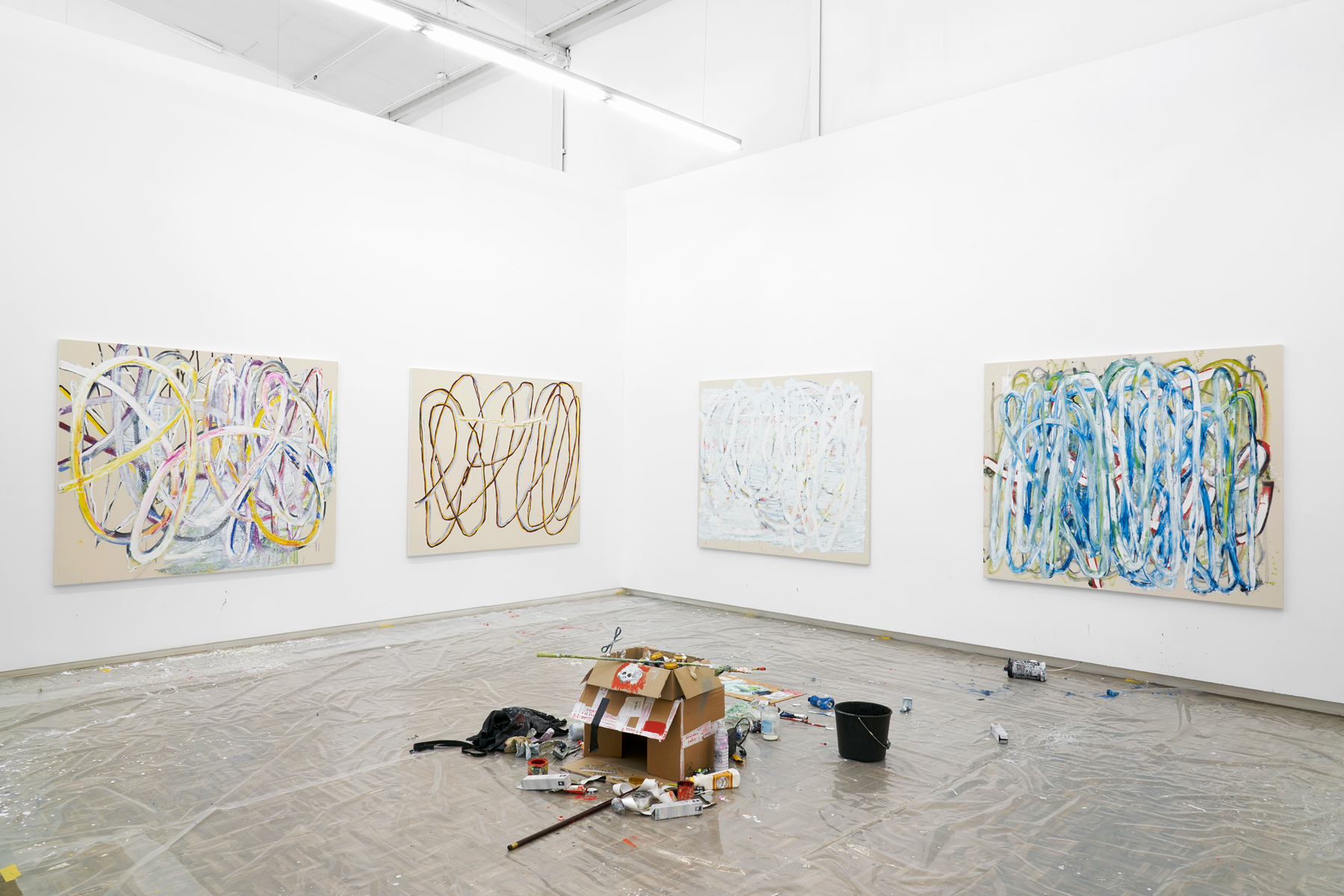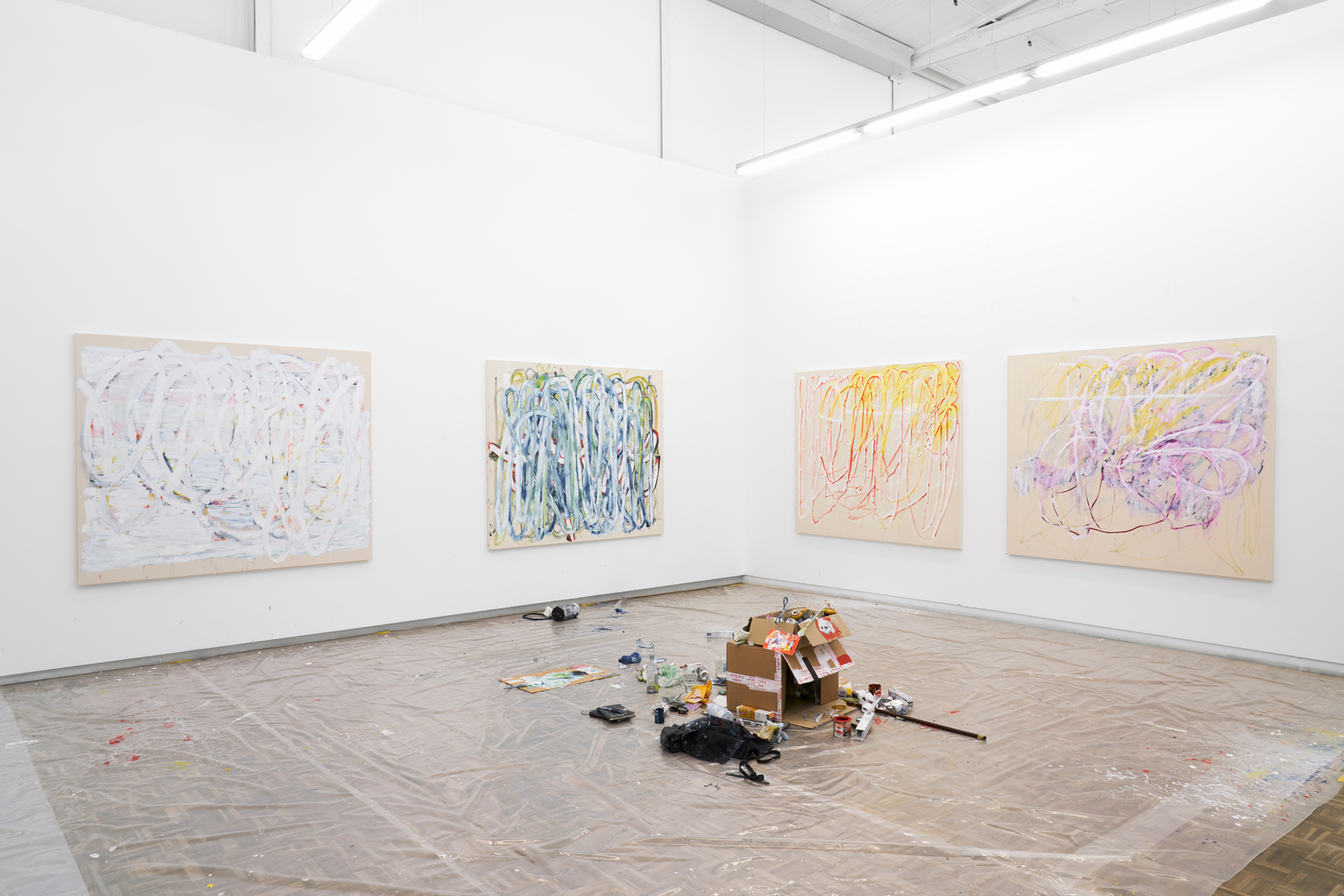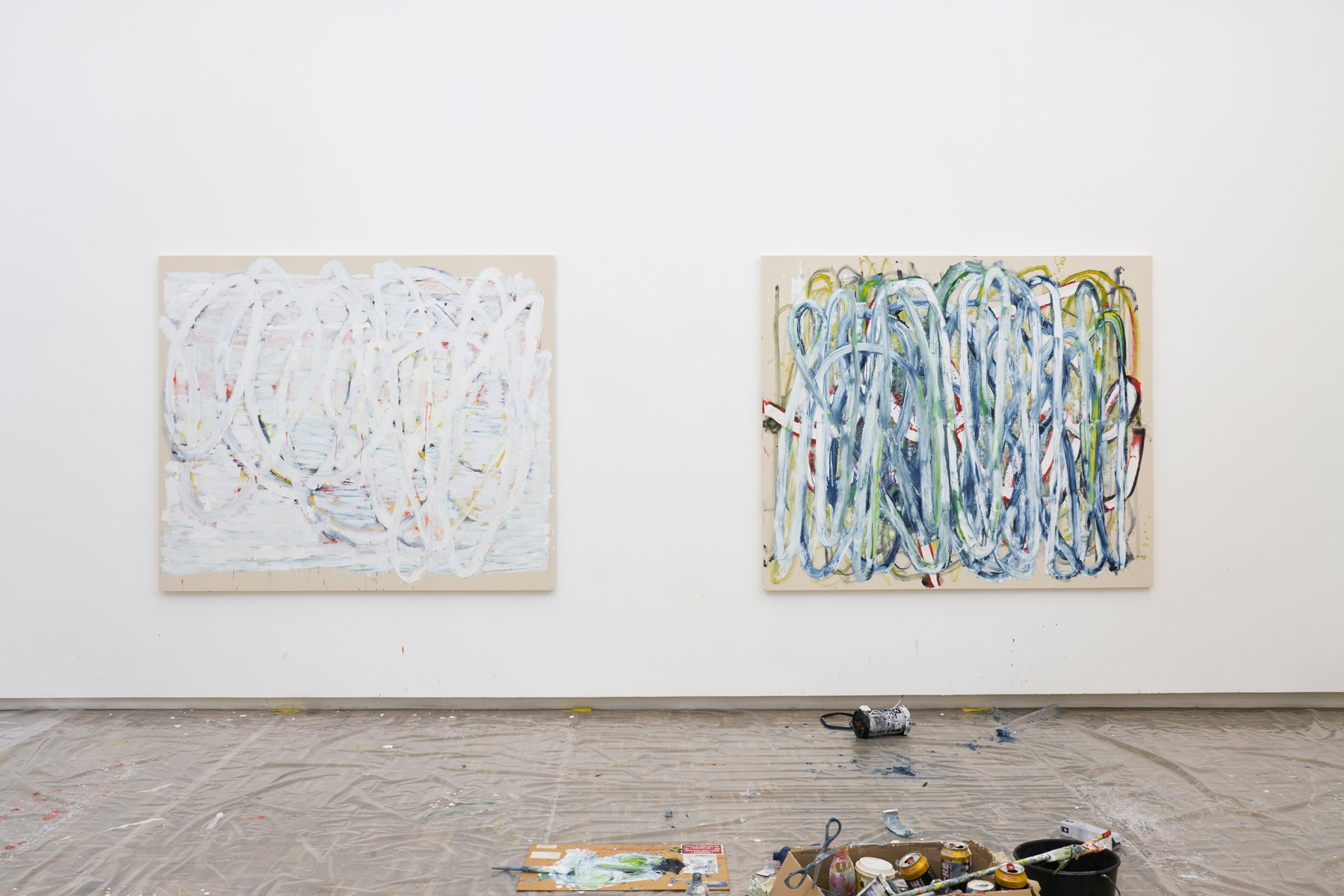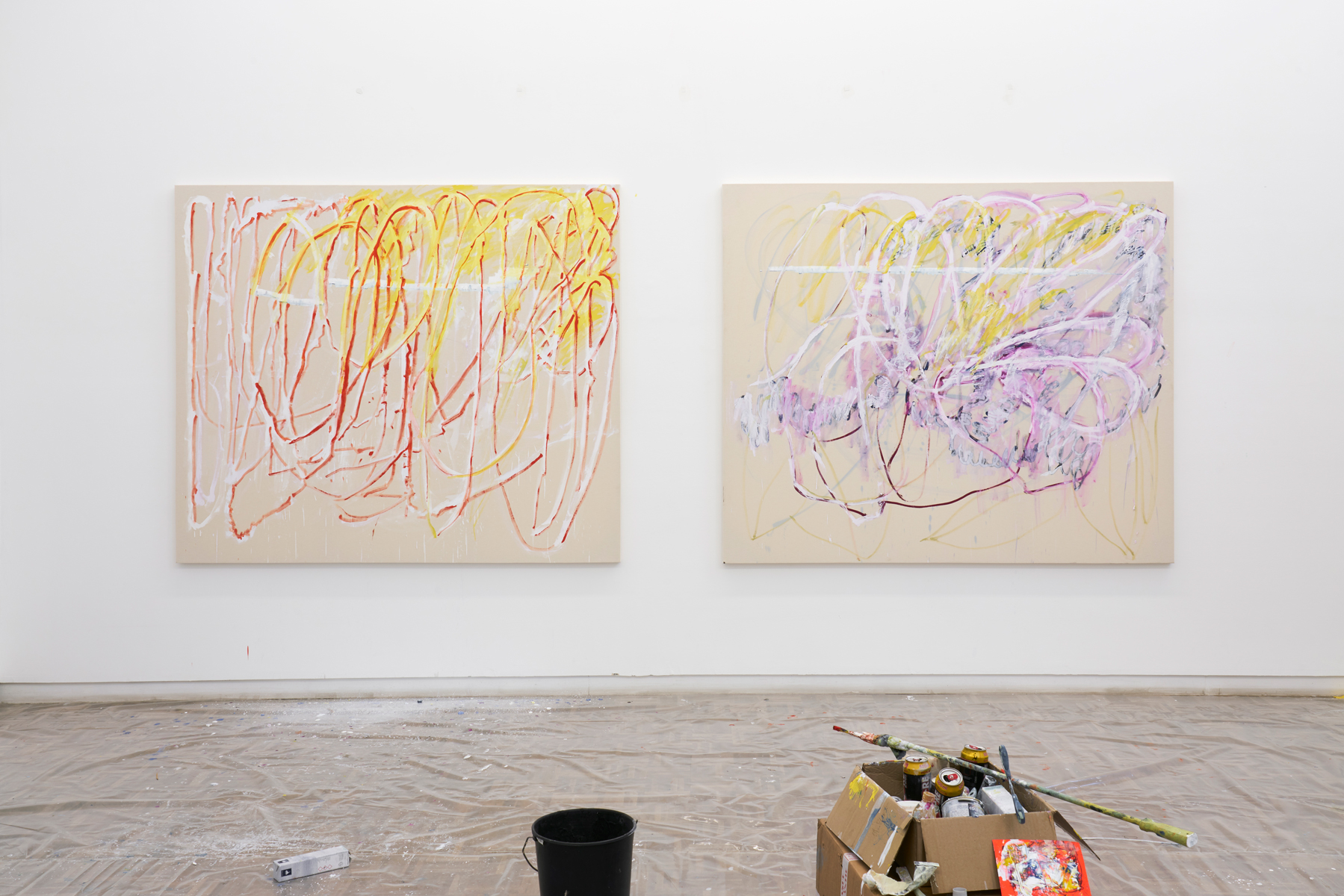




Text by Keely Shinners
We might think of the exhibition as a game. A game is a structured form of play. An exhibition is a structured form of art-making. The structure: four white walls, six raw canvas. The aim: make of them what you will. When I visit Jan-Henri Booyens in the gallery-cum-studio, the tools with which he is to accomplish this are all laid out on the floor: cans of vermilion, cans of spray paint, cans of Score. A deconstructed umbrella (for shadow-making on the wall), a deconstructed kite (for a trip-wire), a clump of tin-foil with a smiley-face drawn on (the new studio assistant, apparently). For Booyens, it seems, art-making is itself a form of play.
A game is a speletjie, is a spell, is a form of magic. Booyens shows me his “magic wand” — a paintbrush taped to the end of a stick — which he uses to reach high up on the canvas and draw intuitive, sometimes uncontrolled, lines. He refers to the hidden elements in his paintings — like figurative moments, like glow-in-the-dark paint — as “easter eggs.” The paintings “take the viewer on a thought journey,” a visual maze, a loop-the-loop for the eye, engendering a myriad dizzying sensations and ideas. For the artist, the gesture is more energetic: the arm sweeps up, down, and around, as if gearing up to pitch a softball, or twirling a ribbon round on stage, or winding up a giant music box.
A game can also be a challenge. For Booyens, the challenge is uniformity. Each painting is composed of the same repeated gesture. It resembles the margin-doodles of the listless. Or the frenetic scrawls of a writer stuck between something and nothing to say. As a writer, I’m reminded of my own notes, in cursive: each painting a word; the exhibition a sentence I can’t quite read. “Not a sentence,” says Booyens, “a response.” As a game is a response, a many million responses, to a particular problem or code.
We might think of the canvas as the problem. Booyens’s response is guided not by plan and execution but impulse and improvisation. That was the whole schtick with the New York school: to do rather than make. To be surprised, overcome, and even endangered by the process. To let things play out.
Booyens says he’s less influenced by high art than he is by nature and its ever-surprising gestures and moods. He’s also deeply influenced by his glitch art practice. A glitch occurs when there’s a breakdown or over-accumulation of data, which results in an error; glitch art is the aestheticization of that error. Booyens’s paintings embrace error. Errant marks corrupt the uniformity imposed on the foreground. Paint imitates the unpredictability which gives matter its texture. Raw canvas plays the role of antimatter, suggesting the non-thing which is infinite.
We might even think of painting as a prehistoric glitch, an over-accumulation of marks which defile a fabric. An imperfection called image. “The artist, in the process of painting,” says Booyens, “destroys something serene and pure.” A painting makes a mess and calls it image. An image makes a mess of the images that came before. So the game takes on a tone of aggression, as games can sometimes do, where the act of playing breaks rules, leaves scars. Interestingly enough, the word play has the same etymological origin as the word plight.
I’m reminded of Hito Steryl’s idea of the image as inherently damaged:
The glitch, the bruise of the image or sound,” she writes, “testifies to its being worked with and working; being passed on and circulated, being matter in action. History inscribes itself into the image in forms of bruises and scars… So it’s not about object-ontologies but image-actions, image-gestures, thing-affinities, chains of reaction of objects, forces, and pixels, that manifest in scars and bruises, but also sometimes in the liquid harmony of the floating world of images.1
It’s a common conception that clarity begets, or springs form, order. For Booyens, it does not. Clarity articulates in chaos, an accumulation of gestures which make, and are, scars.
1 “Artifacts: A Conversation Between Hito Steyerl and Daniel Rourke.” Rhizome, 23 March 2003. https://rhizome.org/editorial/2013/mar/28/artifacts/